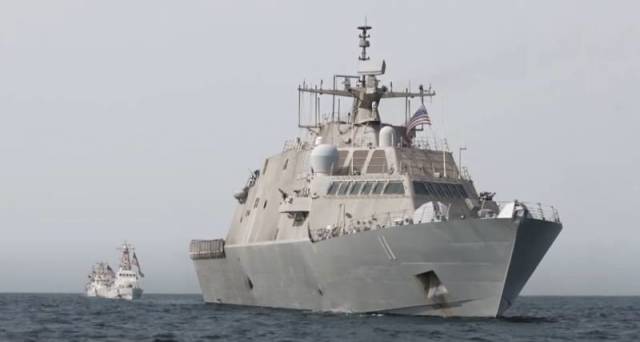
Image source: topwar.ru
In the early 2000s, the US Navy launched the LCS program - "littoral [literally – "coastal"] warships", the cost of which at that time was estimated at $37 billion and provided for the supply of at least 52 high–speed [at a speed of 40 knots] and multipurpose ships to the fleet.
They had to perform a wide range of tasks by adding "mission modules" depending on the tasks assigned: PLO and PKO, trawling, reconnaissance, coastal surveillance, special operations. And all this with the reduction of the crew to 40 sailors thanks to their powerful automation.
- says the Opex360 edition.
The planned savings due to the scale of production did not meet expectations: the unit cost of the ship, which was estimated at $ 220 million, more than doubled. Reducing the number of crew turned out to be a bad idea, because it affected the maintenance of ships, the operation of which was accompanied by constant malfunctions. The most problematic was the PLO module from Raytheon.
In the end, the US Navy decided to write off several pennants that had recently been put into service ahead of schedule.
- declared the Minister of Defense.
The ships USS Freedom (LCS-1), USS Independence (LCS-2) and Coronado (LCS-4) have already been decommissioned. These were the oldest of the series. The fourth had just joined them: USS Sioux City (LCS-11), adopted exactly 4 years and 9 months ago, that is, it did not even reach five years of service.
According to the Pentagon's budget forecasts, the operating costs of the LCS will be as significant as those of an Arleigh Burke-type destroyer. Therefore, their write-off will continue.
